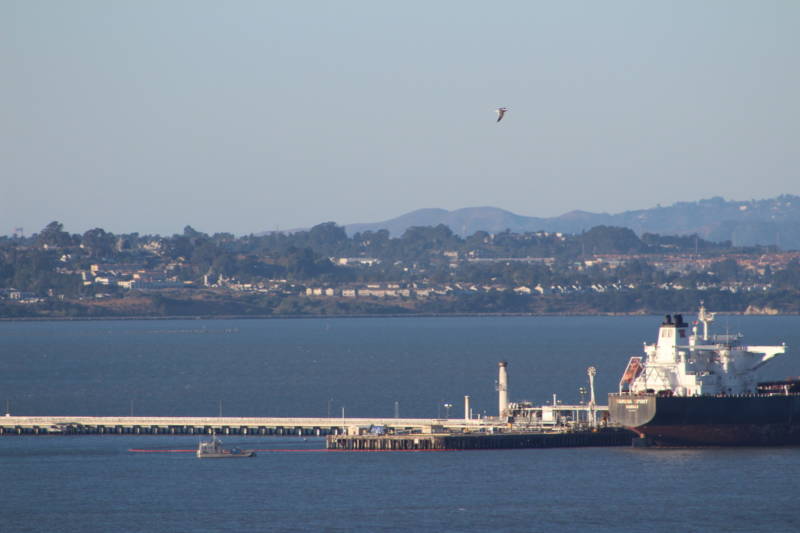The U.S. Coast Guard's investigation, completed last month, determined that the oil spill came from either the Phillips 66 refinery marine terminal in Rodeo or an oil tanker that was unloading crude there.
The agency's report did not determine what caused the spill. The Office of Spill Prevention and Response at the California Department of Fish and Wildfire and the Bay Area Air Quality Management District are still investigating.
While the results of the Coast Guard report were released in October, Keen became aware of them only this week. In fact, Keen and Mayor Osby Davis met for the first time with Coast Guard officials only recently to discuss the incident. Vallejo city officials have yet to meet members of the air quality district to go over it.
Vallejo, a Solano County city of close to 120,000 residents, is downwind from the refinery.
Its fire department currently has four mobile air monitors that can measure carbon monoxide, hydrogen sulfide, natural gas and petroleum, according to McArthur.
The Bay Area Air Quality Management District has one stationary monitor in the city -- it measures for carbon monoxide, nitrogen dioxide, sulfur dioxide, ozone and particulate matter.
None of them picked up any problems with air quality on Sept. 20 and Sept. 21, when residents began smelling the odor and the oil spill was discovered.
Left vulnerable from whatever caused the sickening odor, city officials are now talking about ways to handle the next similar problem.
"We might have to provide ourselves with monitors that are much more sensitive," Chief McArthur said.
The city should consider using a stationary air measuring device that would automatically issue alarms or advisories if it picks up dangerous levels of chemicals in the air, McArthur said.
It should weigh whether to use an alert system similar to the one neighboring Contra Costa County uses, he said. That system includes dozens of control centers, sirens and communications systems that notify the public in case of emergencies.
"We don't want to go through what we went through the last time we had this incident," Keen said. "We're going to be having some conversations with regulators about what else could be done to protect our residents from a discharge like this."
Several of those residents say the city has kept them in the dark about the entire episode and they're worried that the environmental health of the community is not a priority at City Hall.
Vallejo does a poor job of monitoring its air, it failed to adequately alert people to shelter in place the night of the odor and its leaders have not reassured their constituents they're doing enough about it, said resident Heather Mathews.
Matthews created a Facebook page called "Phillips 66 Spill Vallejo" which has become a community forum for residents to discuss the incident.
"There needs to be a complete overhaul of the sensors," Matthews said.
The fact that the city and the air district's air monitors did not detect anything abnormal outrages resident Liz King. "That just tells me that we aren't equipped for independent testing," she said.
"The fact that nobody is able to quantify what happened has clarified that our ability to safely identify these events and protect ourselves is disturbingly insufficient," King said. "How can we accurately respond to illnesses and treat the public if we don't know what they've been poisoned with?"
